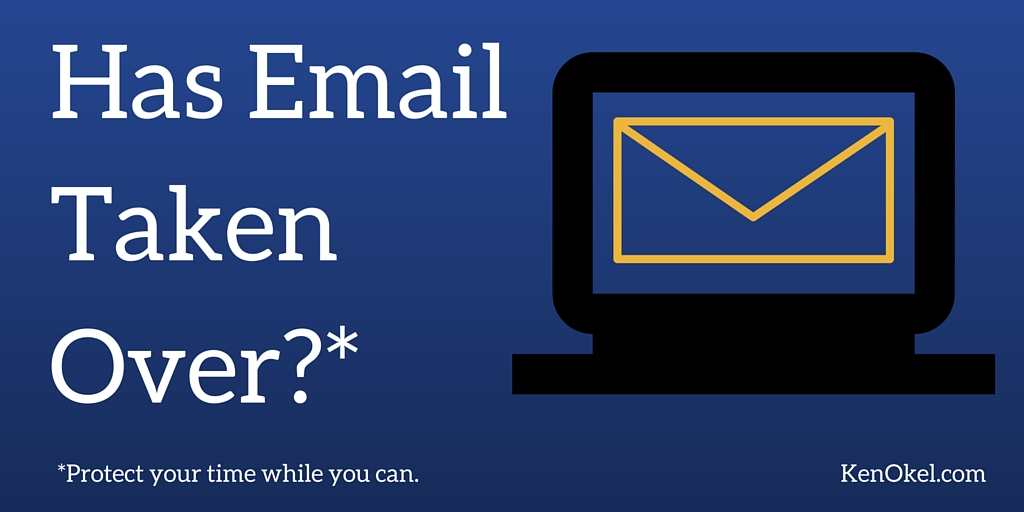 My most asked question about email and productivity is all about how you change an email culture in an organization. Many agree that they receive a lot of emails every day but are unsure how to control their flow, especially inside their business.
My most asked question about email and productivity is all about how you change an email culture in an organization. Many agree that they receive a lot of emails every day but are unsure how to control their flow, especially inside their business.
Let’s recap some of our discussion from last week. We know that studies have found that the average person gets 75 business emails per day. Answering those messages takes up to 28% of that person’s time at work. Is it any wonder that you can’t find the time to tackle your big picture goals?
I think of each of those messages as interruptions in your day. You’re trying to get work done, maybe you’re in a creative place, and suddenly you’re given a distraction. While this interruption may be urgent, most of the time, it’s not.
It’s like your brain is a busy city bus with endless stops. You want to be more like an express line.
I’ve found there are two good ways to do this within an organization. Both need to be discussed and agreed upon by everyone in the business.
Stop Replying So Much
Often a leader in an organization will send out a message to his or her team. While the email does not request a response, people will think they that need to make some sort of comment that shows they read the message. Usually, this done though the reply all function.
What happens is that when one recipient of the original message sees another replying, then he or she feels they must do the same. As a result, you get lots of messages with next to no content that merely serve as a way to let a supervisor know that the original message was read. This kind of behavior spreads like a virus.
Ten years ago, there was more uncertainty about whether someone would notice an email. In today’s interconnected world, your email is likely just a finger stroke away. Thus, do we really need to let someone know that we received a message?
Does it not make sense that if an email does not require a specific response, then the recipients do not need to reply to it. It’s a shift in thinking and some may feel they’ll get in trouble if they don’t respond. But if the leader is okay with this process, then the team can focus more on getting their work done and spend less time on producing messages with little to no content.
Group Your Minor Messages
During the day, you may think of something you want to share with your supervisor. Our tendency is to immediately compose and send an email. Over the course of the day, this could see you create a new message every hour.
While some details should be shared right away, others can wait. They are good to know but not urgent.
Why not consolidate those messages into one update email that you can start writing at the beginning of the day, add to as needed, and send out later in the day. When you think of a non-urgent but informative message, add it to this update.
As a result, you supervisor will get one message instead of many. He or she can then reply to any or all at the same time.
This process also requires discussion and cooperation. People will have to buy into it and commit to a new way of communicating. This can be scary but it’s more frightening to consider all the productive time that’s lost to non-essential messages.
We’ve been accustomed to treating every little happening at work as if it’s breaking news. Most of the time, there is not an urgent need to share. Inform, yes, but don’t make someone drop everything to learn something that could have waited.
Just because email gives us the ability to immediately reach out to someone, doesn’t mean it’s a tool that improves our productivity.






